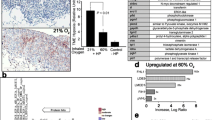Abstract
Flavone acetic acid (FAA, NSC 347512) is known to selectively reduce tumor blood flow. Taking advantage of this pharmacodynamic effect, we have previously shown that FAA in combination with hyperthermia (HT) can produce a marked improvement in antitumor response in mice. In the present study, we investigated whether FAA could increase the cytotoxicity of mitomycin C (MMC), a bioreductive drug with selective cytotoxicity against hypoxic cells, under either normothermic or hyperthermic conditions. In vitro, the cytotoxicity of MMC against B16 melanoma cells was not enhanced with exposure to FAA at concentrations less than 100 μg/ml, even when combined with HT (43°C, 60 min). The cytotoxicity of MMC (1 μg/ml) at pH 6.5, however, was enhanced by exposure of cells to hypoxia in combination with HT. In vivo, the tumor growth time, calculated as the time required to double the initial tumor volume, was 5.2, 6.8, 8.5, and 15.0 days with FAA (150 mg/kg) alone, MMC (4 mg/kg) alone, FAA+MMC, or FAA+MMC+HT (43°C, 15 min) treatment groups, respectively. Antitumor response obtained in animals treated with FAA plus MMC with HT was clearly better than that obtained in any of the other groups. Scheduling of FAA, MMC, and HT was found to be important in producing optimal antitumor response. Administration of MMC (4 mg/kg) prior to FAA (150 mg/kg) and subsequent HT treatment was superior to administration of FAA before MMC. In an attempt to explain these findings, the influence of FAA on blood flow in skeletal muscle and in tumor was examined using a laser blood flowmeter. FAA administration to mice produced a 75% reduction in blood flow to the tumor for up to 2 h but had no detectable effect on normal skeletal blood flow. Our current explanation of the increased antitumor response achieved with the combination of MMC, FAA, and HT is as follows. The FAA-mediated decrease in blood flow to the tumor, when combined with HT, may produce sufficiently hypoxic conditions to significantly increase the antitumor efficacy of the bioreductive drug, MMC. We believe that clinical testing of this combined drug treatment with hyperthermia is warranted.
Similar content being viewed by others
Author information
Authors and Affiliations
Additional information
Received: 1 February 1995/Accepted: 6 July 1995
Rights and permissions
About this article
Cite this article
Takeuchi, H., Baba, H., Maehara, Y. et al. Flavone acetic acid increases the cytotoxicity of mitomycin C when combined with hyperthermia. Cancer Chemother Pharmacol 38, 1–8 (1996). https://doi.org/10.1007/s002800050439
Issue Date:
DOI: https://doi.org/10.1007/s002800050439




